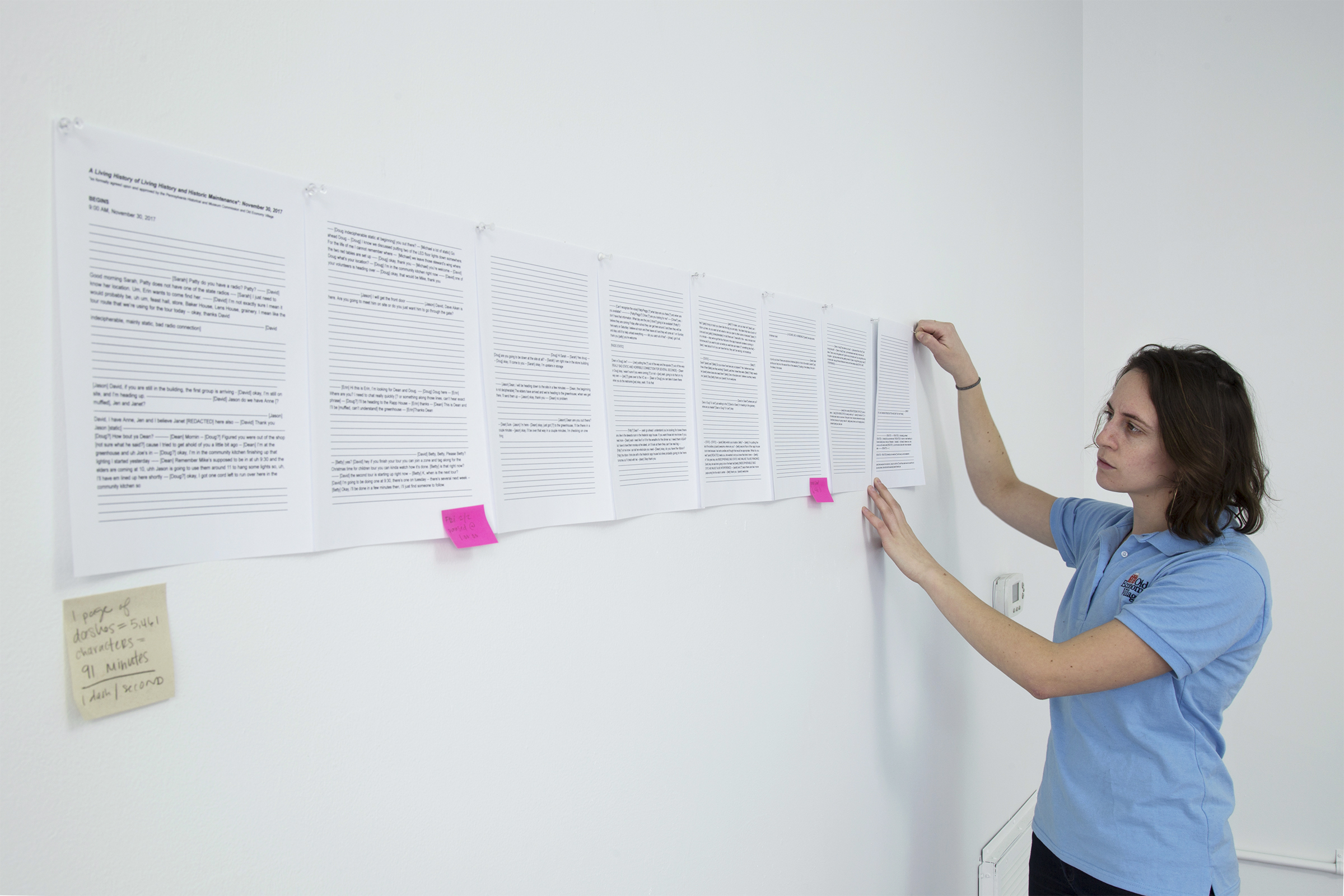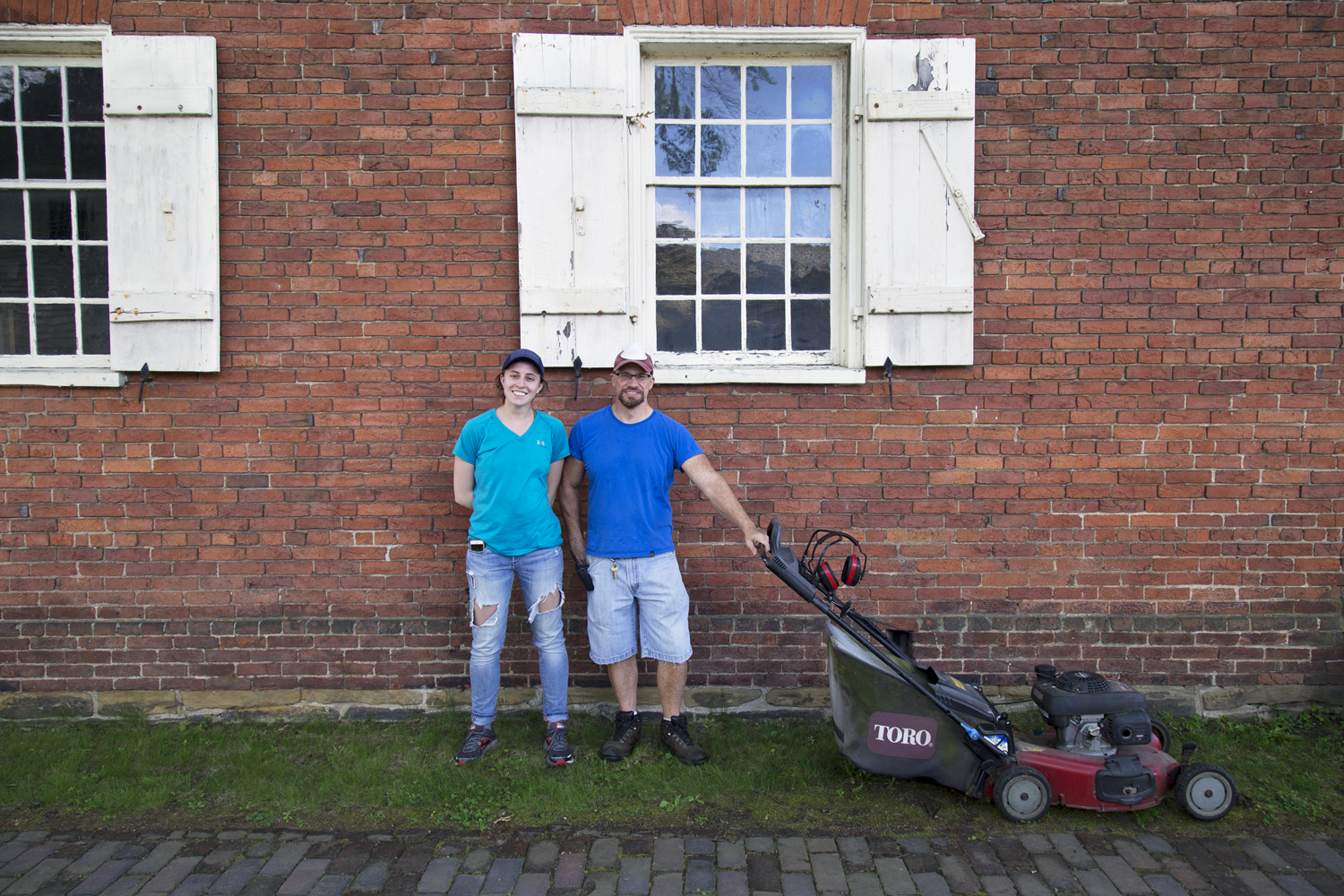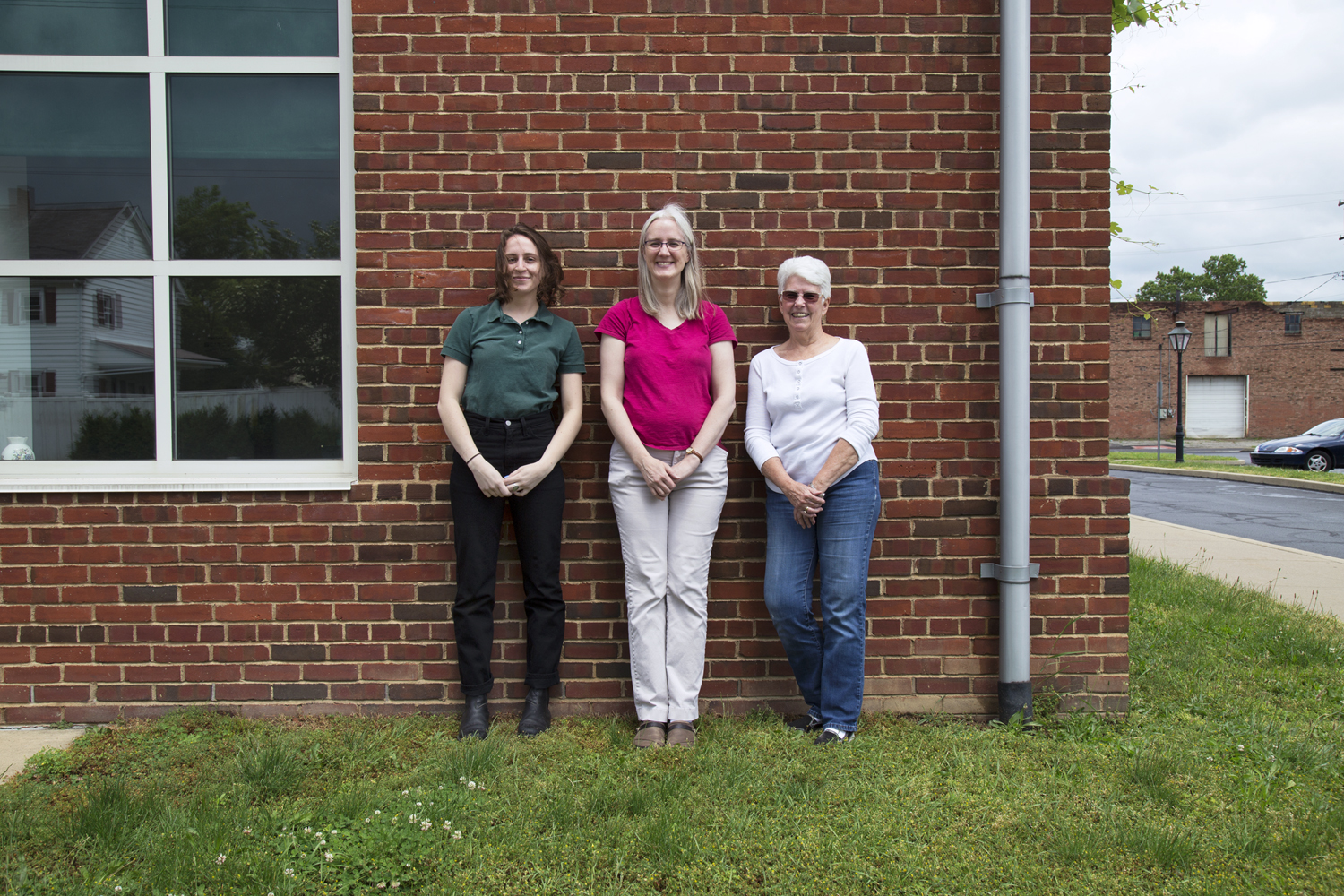✰ Works Included in the exhibition ✰
Above: Spending the day volunteering with as many staff and volunteers that agreed to let me shadow, interview and take a photograph with them.
Maintaining Utopia, 2017–2018
... time and its allies are busy twenty-four hours a day assaulting our historic property. With a plan and the right tools, you can hold the line.
- “Housekeeping for Historic Sites” training video, Northeast Museum Services Center, National Park Service, 1996
Museum and archival maintenance standards often point to their own non-sustainability and eventual demise. Idealized “environmental conditioning” specifications fantasize an impossible reality: a world without dust, decay, bias, human error, or budget cuts. When does care for a specific memory, ghost, or object fade and become overtaken by a commitment to protocol, systematic procedure, and data points? Environmental and ideological conditioning often collapse and enmesh within practices of preservation. National mythology naturalized and propped up by places demarcated as worth the labor of remembering.
In 2017, I spent the summer and part of the fall at a regional museum and historic site to learn more about the living history of historic maintenance. Located along the Ohio River the museum preserves the life, thought, and material culture of the Harmony Society, a religious, utopian, and communal separatist community that settled in Pennsylvania in 1805. The site includes six acres of land with 17 original buildings and recreated orchards and gardens. The collection is home to roughly 16,000 objects ranging from original furniture and paintings to mail correspondence, an unfinished replica of the Harmonists’ public natural history museum, and the coded traces of practicing alchemists.
As a living history museum, the lines between historic and non historic object are continually blurred. Physical grounds become a historic object – living plants are part of the collection, an accessioned stand-in and replica of what no longer exists. The staff works to recreate life in the 19th century to the best of their ability with tenuous resources, volunteers, and staff. Educators focus on the tasks that were required to maintain the original utopian project. They reenact outmoded forms of craft and labor while enacting contemporary labor in the hopes of maintaining a more recent humanist project threatened by non-sustainability: the museum itself.
Maintaining Utopia examines the ritualized behaviors of care surrounding historic maintenance and the codification of history and knowledge. The exhibition combines video, photography, and sculpture to generate a new museum collection that highlights human actors, loss and fragility, the common reality of operating without enough information, and the skewed and incomplete nature of knowledge production – flawed and inscribed by the tools at hand.
















